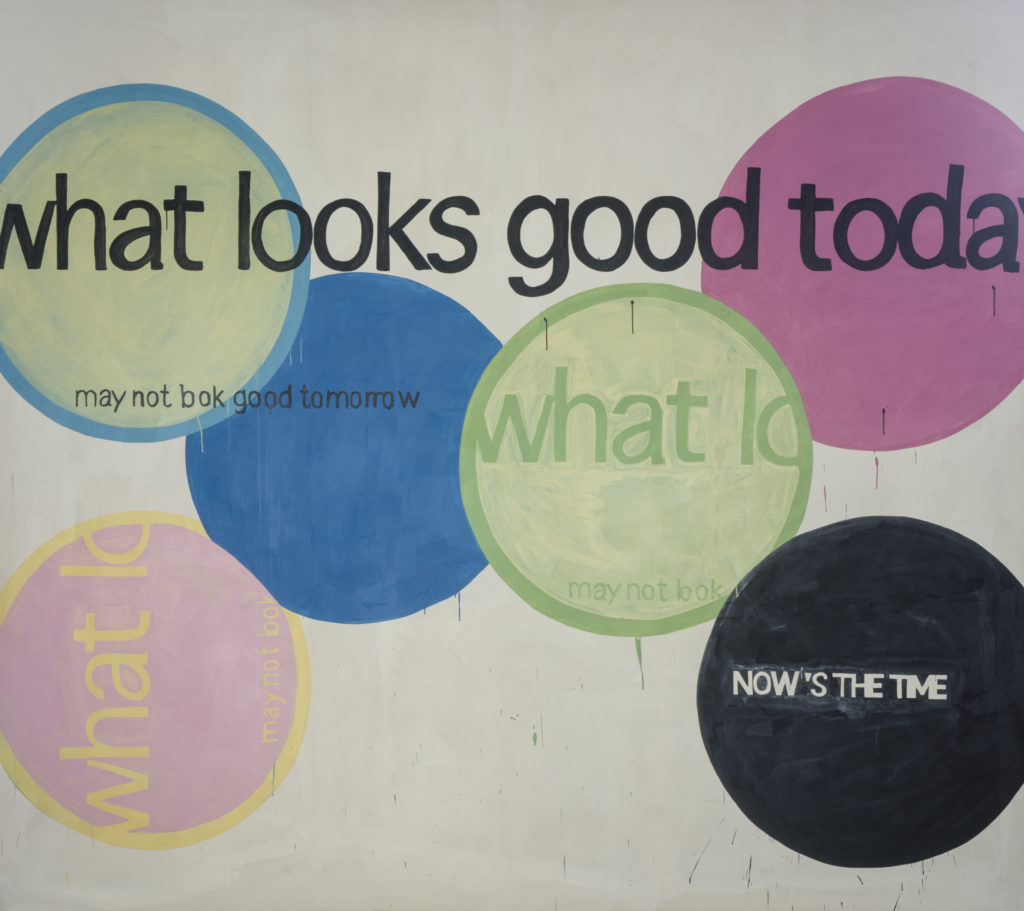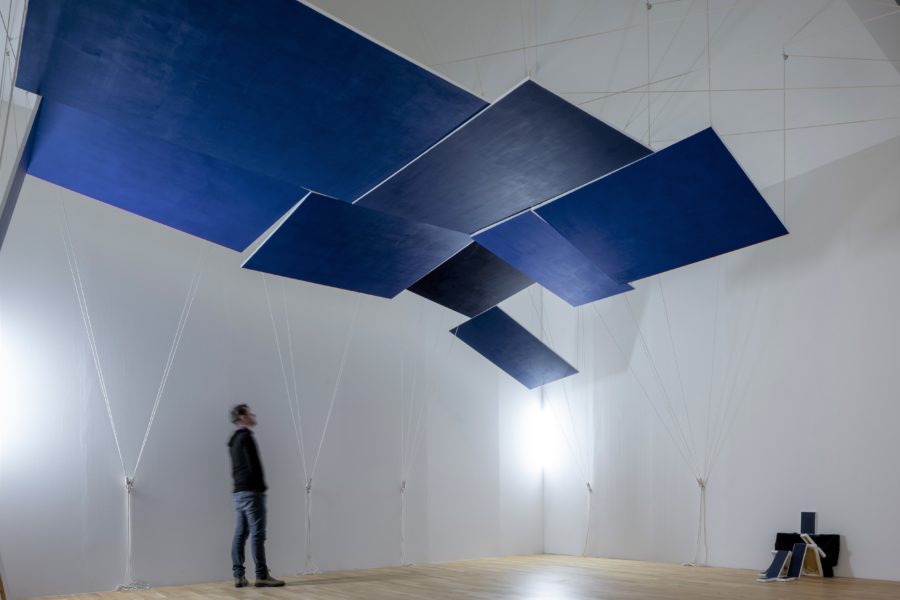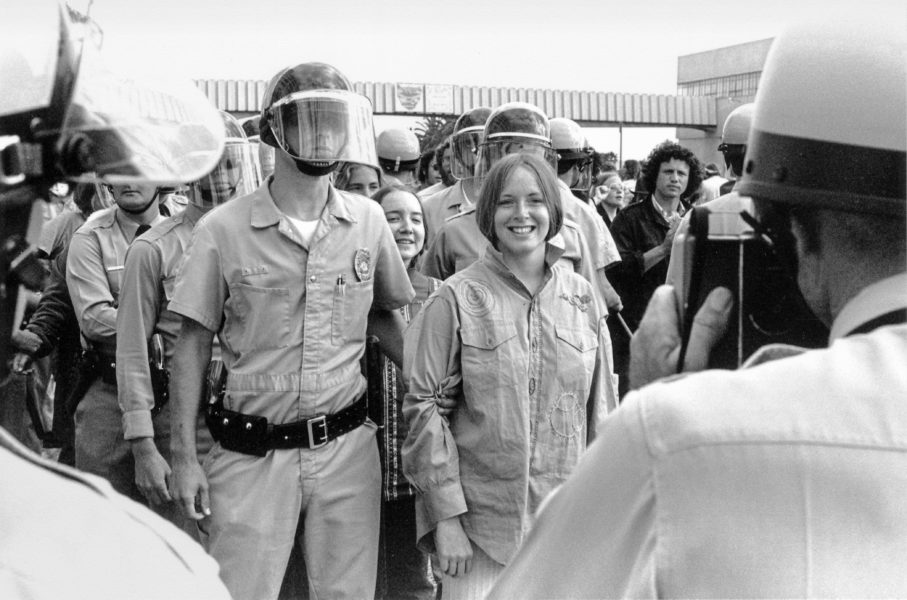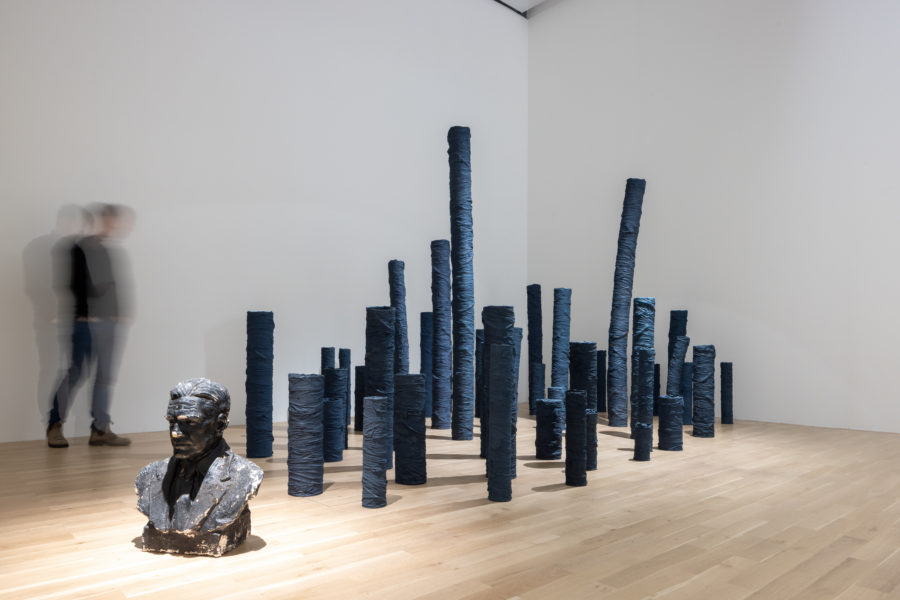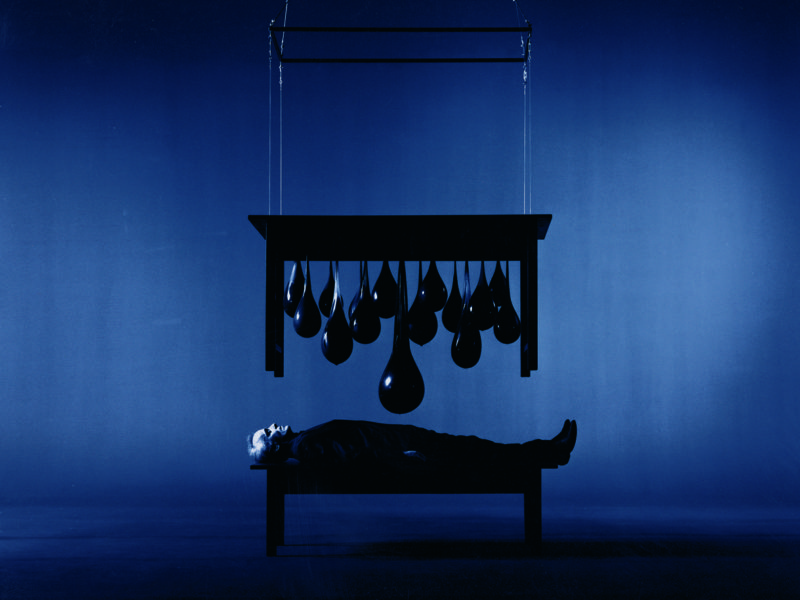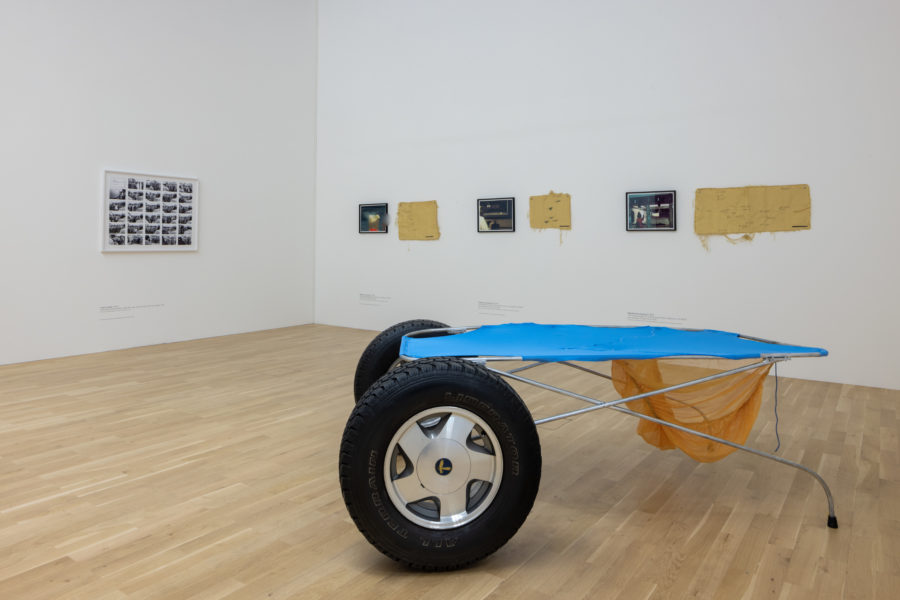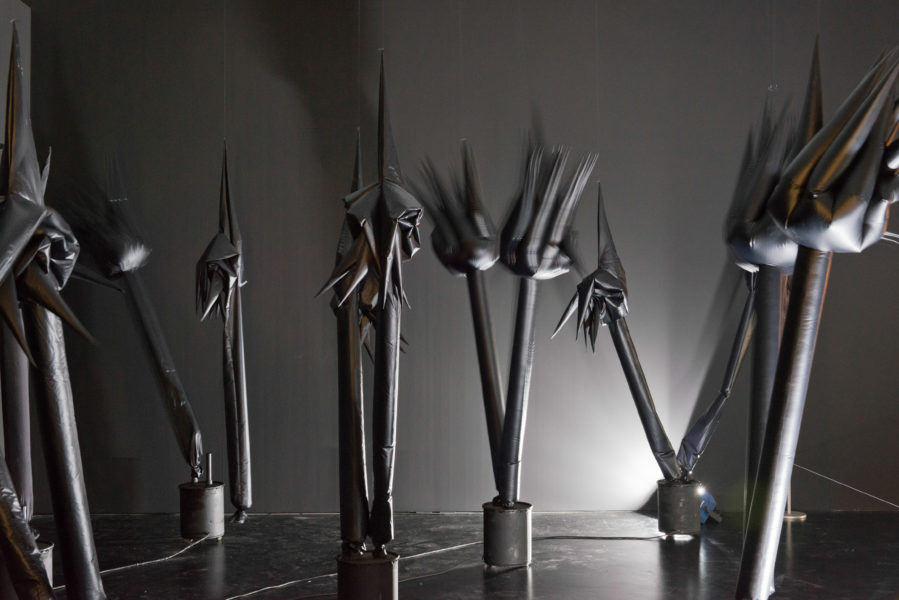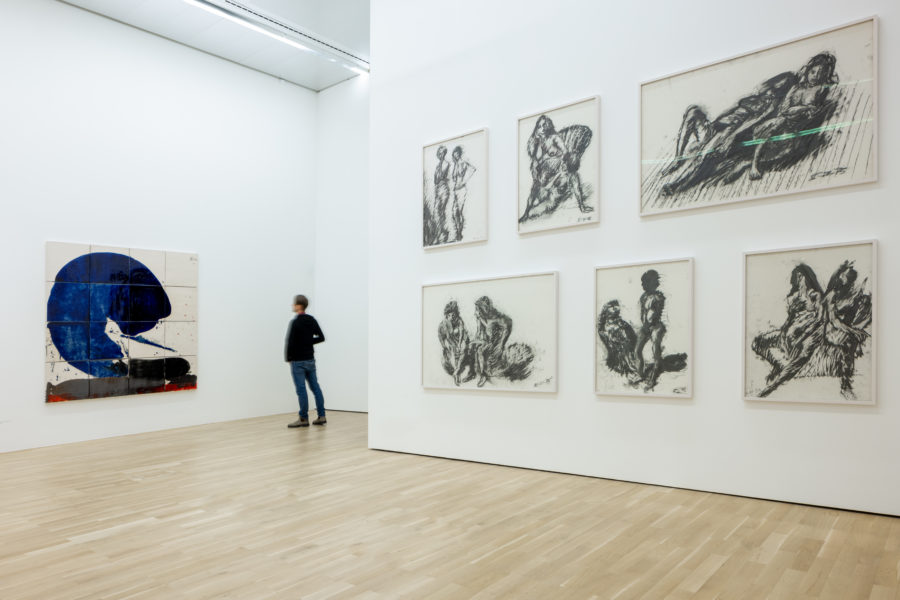Blow Up!
The Growth of Things
Images
Infos
Like a rhizome, the exhibition Blow Up! is permeated by the most diverse themes of our time, which, in the broadest sense, deal with The Growth of Things. With an impressive expansion of more than eighty recent donations, the growth of the museum collection itself is also at the center of the exhibition. With their broad medial diversity, the works serve as the basis for a stimulating exploration of psychologically and socially charged spaces, landscapes, and discourses. All new acquisitions are indebted to generous collectors and artists.
With its indeterminate form and raw materiality, Blob by Phyllida Barlow seems to make its way out of the wall and into the exhibition space as a bubble-like gamete. The powerfully formed sounds of the female performer in Gary Hill’s video work Remembering Paralinguay, which aim at a pre-linguistic form of communication, are of similar archaic power and impression. Otto Piene clearly reveals the reciprocal relationship of growth and decay with his impressive pneumatic ensemble, Fleurs du Mal (Flowers of Evil, 1969). The play with natural forces and elements continues in his wall reliefs, which enter into a dialogue with the “whipped-up” ceramic pictures by K. O. Götz. The technical play with size—“blow-up” is the term used for enlargements in photography or zooming in in films—is also mastered by Jochen Lempert, who bestows his animal portraits with a sense of individuality.
In his photographs, Adam Putnam develops indeterminable spatial situations, as well as immediate physical interactions with space. With the greatest possible emotional distance, Daniel Boudinet uses a camera to explore the interior of his Parisian apartment at night. Alain Fleischer continues the game with (maximum) distance and (intimate) closeness in his projections onto the walls of metropolitan buildings. The large, three-part work Zweisamkeitsimaginierung (Imagination of Togetherness) by Jürgen Klauke deals with a physical examination of the transience of the material world. The artist Stefan Thiel deals with fetish preferences by portraying people wearing nylon stocking masks. The hidden and fragmentary is also present in the work of the feminist artist Wynne Greenwood, who, in her video installation, enters into a dialogue with her “anxious stomach” and caricatures bourgeois conventions. The Argentine painter Mariela Scafati experiences her spatial installation of movable, monochrome canvases, which she orchestrates via rope connections, as an extension of her own body.
In addition to the question of the self-positioning of the individual, evolved social structures are also subjected to critical scrutiny. Thus, displacement plays a key role in the examination of the history and present of the United States. Rodney McMillian’s expansive installation is a critique of racism and patriarchal power structures. In contrast, the archetype of American architecture, the white man’s log cabin, is the focus of Olga Koumoundouros’s sculpture Sagamore: The Good Life. In another series of works, she criticizes the enthusiasm for weapons that is deeply rooted in American society, while Fred Lonidier documented the arrests of peaceful protesters against the Vietnam War in 1972 as a grotesque act. Johannes Wohnseifer comments bitingly on the legacy of Western colonialism with the title of his flag painting: not a flag not even a map.
Nathan Carter questions the concept of territorial borders with his transnational cartography in a deliberately naive aesthetic. Tejal Shah reveals the failure of border crossings as a result of flight and migration by depicting the lifeless bodies of “boat people.” Jordan Wolfson’s filmic work I’m sorry but i don’t want to be an Emperor also calls for a fight for the values of democracy by reproducing in sign language Charlie Chaplin’s speech from the parody The Great Dictator. Meanwhile, by the end of the exhibition, Phyllida Barlow’s Blob seems to have ballooned into an oversized surveillance camera, which thematizes the omnipresence of “Big Brother.”
Participating Artists
Phyllida Barlow, Daniel Boudinet, Nathan Carter, Alain Fleischer, K. O. Götz, Wynne Greenwood, Gary Hill, Jürgen Klauke, Olga Koumoundouros, Jochen Lempert, Fred Lonidier, René Lück, Michel Majerus, Rodney McMillian, Otto Piene, Adam Putnam, Mariela Scafati, Tejal Shah, Stefan Thiel, Goran Tomcic, Johannes Wohnseifer, Jordan Wolfson
Curators:
Holger Broeker
Elena Engelbrechter
Curatorial Assistant:
Carla Wiggering
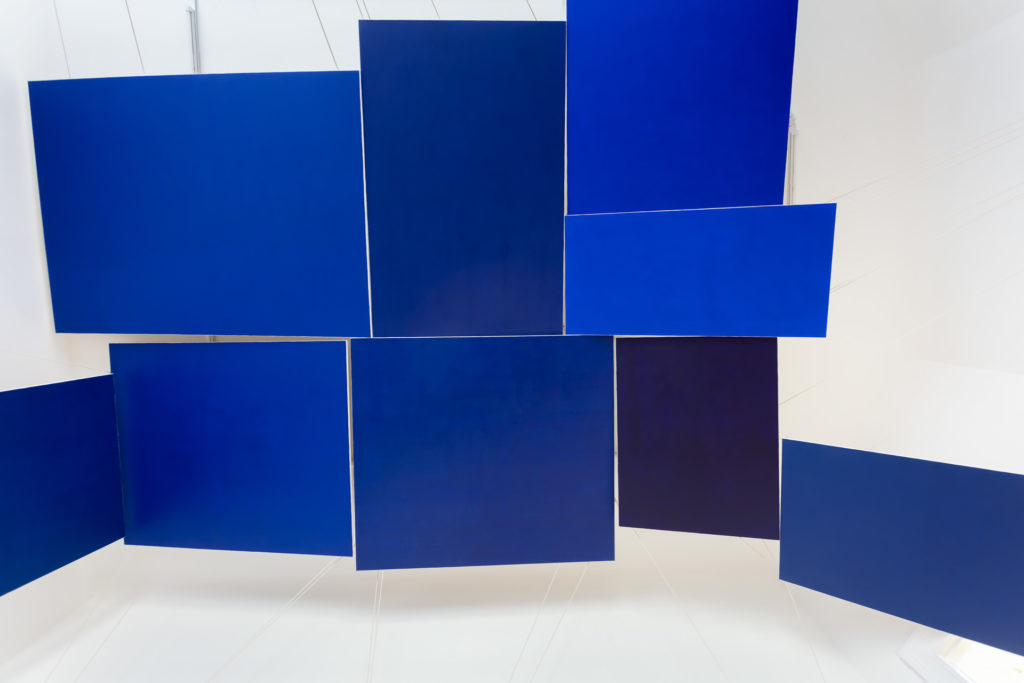

During his short lifetime—he died in a plane crash at the age of only thirty-five—Michel Majerus (1967–2002) created one of the most incisive oeuvres of the 1990s focusing on painting and installation. Twenty years after his death, the nationwide exhibition series Michel Majerus 2022 is dedicated to various work phases and aspects of his extraordinary oeuvre, which continues to influence artists of younger generations to this day.
As part of Blow Up!, the Kunstmuseum Wolfsburg is presenting the ten-square-meter painting What looks good today may not look good tomorrow (1999) from its collection and is lending the room-filling installation The space is where you’ll find it (2000) to the exhibition Michel Majerus. Data Streaming at the Hamburger Kunstverein (November 12, 2022 – February 12, 2023).
